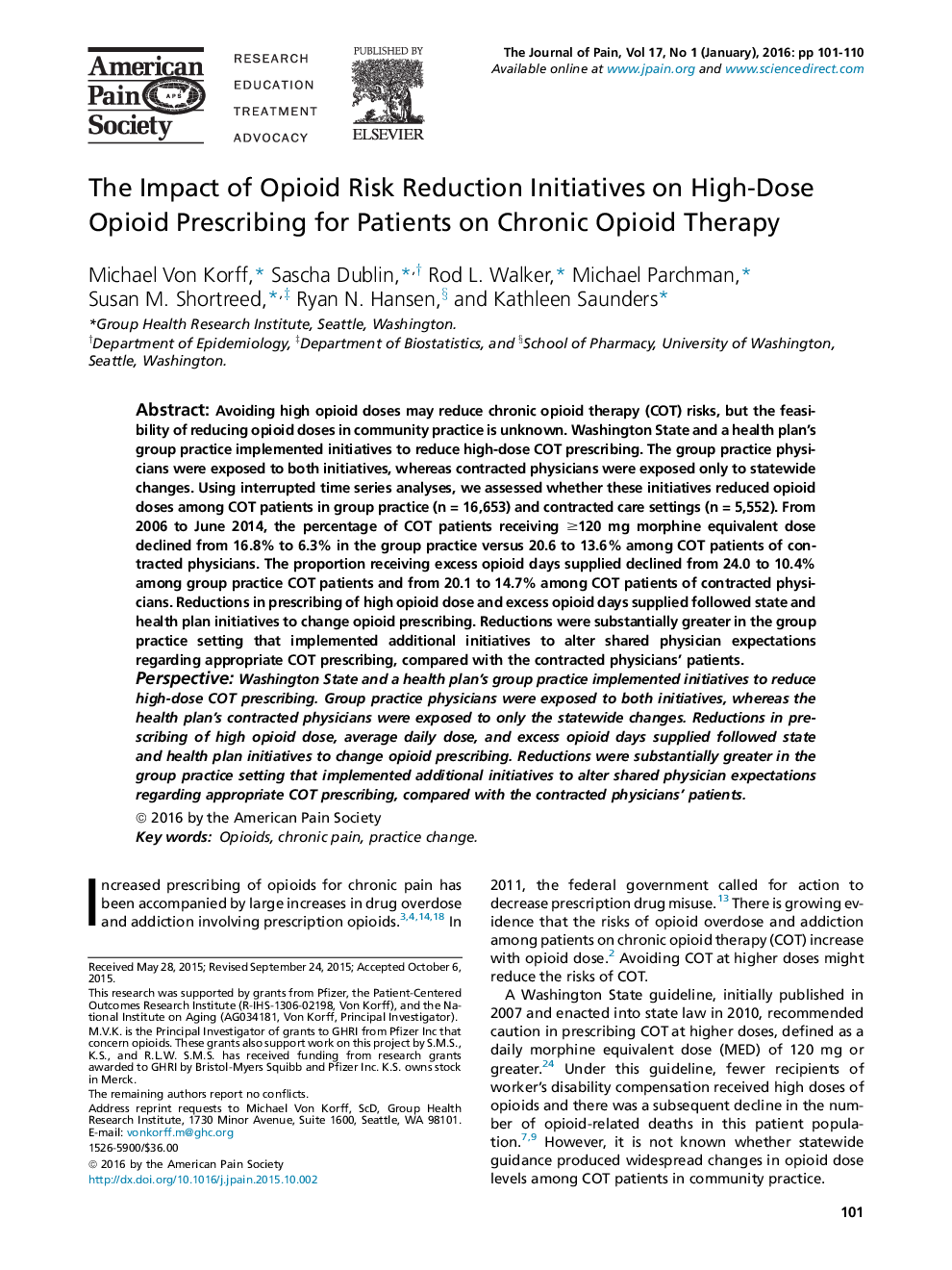| کد مقاله | کد نشریه | سال انتشار | مقاله انگلیسی | نسخه تمام متن |
|---|---|---|---|---|
| 2722876 | 1566725 | 2016 | 10 صفحه PDF | دانلود رایگان |
• Using interrupted time series analyses, we assessed whether the Washington State chronic opioid therapy guideline and complementary health plan initiatives to change opioid prescribing reduced opioid doses among COT patients in a health plan's group practice (n = 16,653) compared with its contracted care settings (n = 5,552) exposed to only state guideline changes.
• From 2006 to June 2014, the percentage of COT patients receiving ≥120 mg morphine equivalent dose declined from 16.8% to 6.3% in the group practice versus 20.6 to 13.6% among COT patients of contracted physicians.
• The proportion receiving excess opioid days supplied declined from 24.0 to 10.4% among group practice COT patients and from 20.1 to 14.7% among COT patients of contracted physicians.
Avoiding high opioid doses may reduce chronic opioid therapy (COT) risks, but the feasibility of reducing opioid doses in community practice is unknown. Washington State and a health plan's group practice implemented initiatives to reduce high-dose COT prescribing. The group practice physicians were exposed to both initiatives, whereas contracted physicians were exposed only to statewide changes. Using interrupted time series analyses, we assessed whether these initiatives reduced opioid doses among COT patients in group practice (n = 16,653) and contracted care settings (n = 5,552). From 2006 to June 2014, the percentage of COT patients receiving ≥120 mg morphine equivalent dose declined from 16.8% to 6.3% in the group practice versus 20.6 to 13.6% among COT patients of contracted physicians. The proportion receiving excess opioid days supplied declined from 24.0 to 10.4% among group practice COT patients and from 20.1 to 14.7% among COT patients of contracted physicians. Reductions in prescribing of high opioid dose and excess opioid days supplied followed state and health plan initiatives to change opioid prescribing. Reductions were substantially greater in the group practice setting that implemented additional initiatives to alter shared physician expectations regarding appropriate COT prescribing, compared with the contracted physicians' patients.PerspectiveWashington State and a health plan's group practice implemented initiatives to reduce high-dose COT prescribing. Group practice physicians were exposed to both initiatives, whereas the health plan's contracted physicians were exposed to only the statewide changes. Reductions in prescribing of high opioid dose, average daily dose, and excess opioid days supplied followed state and health plan initiatives to change opioid prescribing. Reductions were substantially greater in the group practice setting that implemented additional initiatives to alter shared physician expectations regarding appropriate COT prescribing, compared with the contracted physicians' patients.
Journal: The Journal of Pain - Volume 17, Issue 1, January 2016, Pages 101–110
